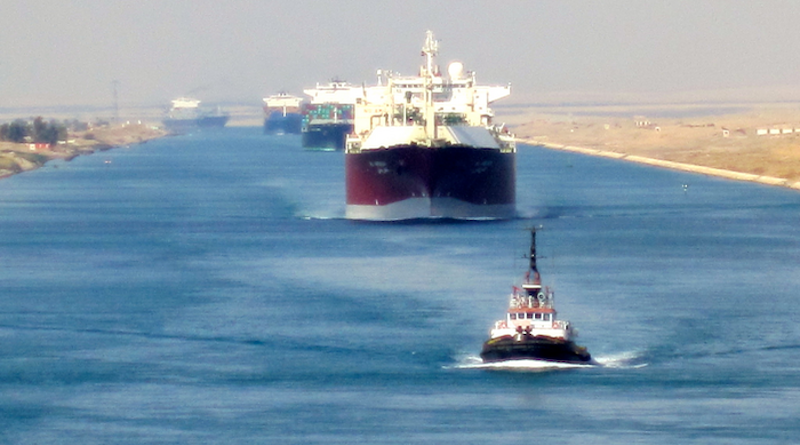The India-Middle East-Europe Economic Corridor: An Alternative To The Congested Suez Canal – Analysis
By Institute of South Asian Studies
By Amitendu Palit
The India-Middle East-Europe Economic Corridor (IMEC) was announced at the G20 Leaders’ Summit in New Delhi on 9 and 10 September 2023. It includes eight G20 members – the European Union (EU), France, Germany, India, Italy, Saudi Arabia, the United Arab Emirates (UAE) and the United States (US).
The IMEC has drawn significant attention for its geopolitical significance. It has been described as a strategic alternative proposed by the US and its allies to China’s Belt and Road Initiative (BRI). It has also been noted as a reflection of India’s deeper strategic engagement with the Middle East, Europe and the US, specifically the I2U2 initiative, comprising India, Israel, the UAE and the US. The geopolitical focus has deflected attention from its economic prospects. These pertain to the IMEC being a cost-efficient alternative option for moving goods from India to Europe.
The IMEC has an eastern and a northern corridor. The former will connect India and the Middle East through the Arabian Gulf. The latter will connect the Arabian Gulf to Europe. Both corridors will be maritime stretches. The UAE and Saudi Arabia will have designated ports connecting to Indian ports through the eastern corridor.
Based on the pattern of the current maritime traffic flows between India and the Middle East, Abu Dhabi and Jebel Ali ports from the UAE, along with King Abdul Aziz (Dammam) port in Saudi Arabia, are expected to be key ports from the Middle East in the IMEC, while Mumbai and Mundra ports are likely to be so from India’s west coast.
For the northern corridor, the Haifa port in Israel is likely to be the key gateway to the maritime route connecting the Middle East to the major ports in southern and western Europe. The maritime corridors of the IMEC will be bridged by a rail artery linking the UAE and Saudi Arabia to Jordan and Israel.
This is where the IMEC will go multi-modal. At present, most of the India-Europe maritime cargo travels through the Suez Canal. The Suez Canal – an artificial waterway located in Egypt and functioning for nearly one and a half centuries – is the briskest route for goods moving from the Indian Ocean to Europe. The 193 kilometres-long Suze Canal connects the Mediterranean Sea to the Gulf of Suez in the Red Sea. The Suez Canal is one of the world’s busiest shipping channels, along with the Strait of Malacca in Southeast Asia and the Strait of Hormuz in the Arabian Gulf and accounts for around 13 per cent of global goods trade.
Global and regional businesses trading between India and Europe have been wary of the congestion in the Suez Canal and its disruptive impact on supply chains. A telling example was the severe disturbance experienced in March 2021 after a container was stuck sideways in the Suez Canal, leaving no room for ships to pass either way. The unprecedented logjam forced traffic to pile up in both directions. Several containers had to travel backwards for long distances to divert to other routes. The incident was an eye-opener for global supply chain managers on the serious difficulties that could arise in the narrow Suez Canal in the event of unforeseen exigencies.
India and the other stakeholders of the IMEC from Europe and the Middle East have strong imperatives for identifying an alternative to the Suez Canal. This arises from their common interest in safeguarding supply chains, with trade between India, the Middle East and Europe slated to expand rapidly following the conclusion of India’s ongoing foreign trade agreements (FTA). India and the UAE have signed and implemented a bilateral FTA. Negotiations are going on between India and the EU, and between India and the United Kingdom (UK), on two bilateral FTAs.
These FTAs will link India through reciprocal preferential market access conditions and complement trade rules with France, Germany, Italy (EU members) and the UK. All these FTAs that India has signed, or will sign, are newgeneration and broadly similar in their scope and coverage. It, therefore, makes imminent sense for India and its partners to invest in a conducive connectivity initiative for exploiting the new trade prospects. The commitment of India and its Western partners to the IMEC underscores the importance of facilitating innovative connectivity to nurture trade and supply chains. The multimodal IMEC, backed by digital foundations, can be a trendsetter.
About the author: Dr Amitendu Palit is a Senior Research Fellow and Research Lead (Trade and Economics) at the Institute of South Asian Studies (ISAS), an autonomous research institute at the National University of Singapore (NUS). He can be contacted at [email protected]. The author bears full responsibility for the facts cited and opinions expressed in this paper.
Source: This article was published by the Institute of South Asian Studies (ISAS)


I do not know why India is trying to deprive Misr from expected revenues due to the new alternative. Misr is a partner to India and the two countries can cooperative in this project. This project is designed to hurt Misr by its basic revenues.